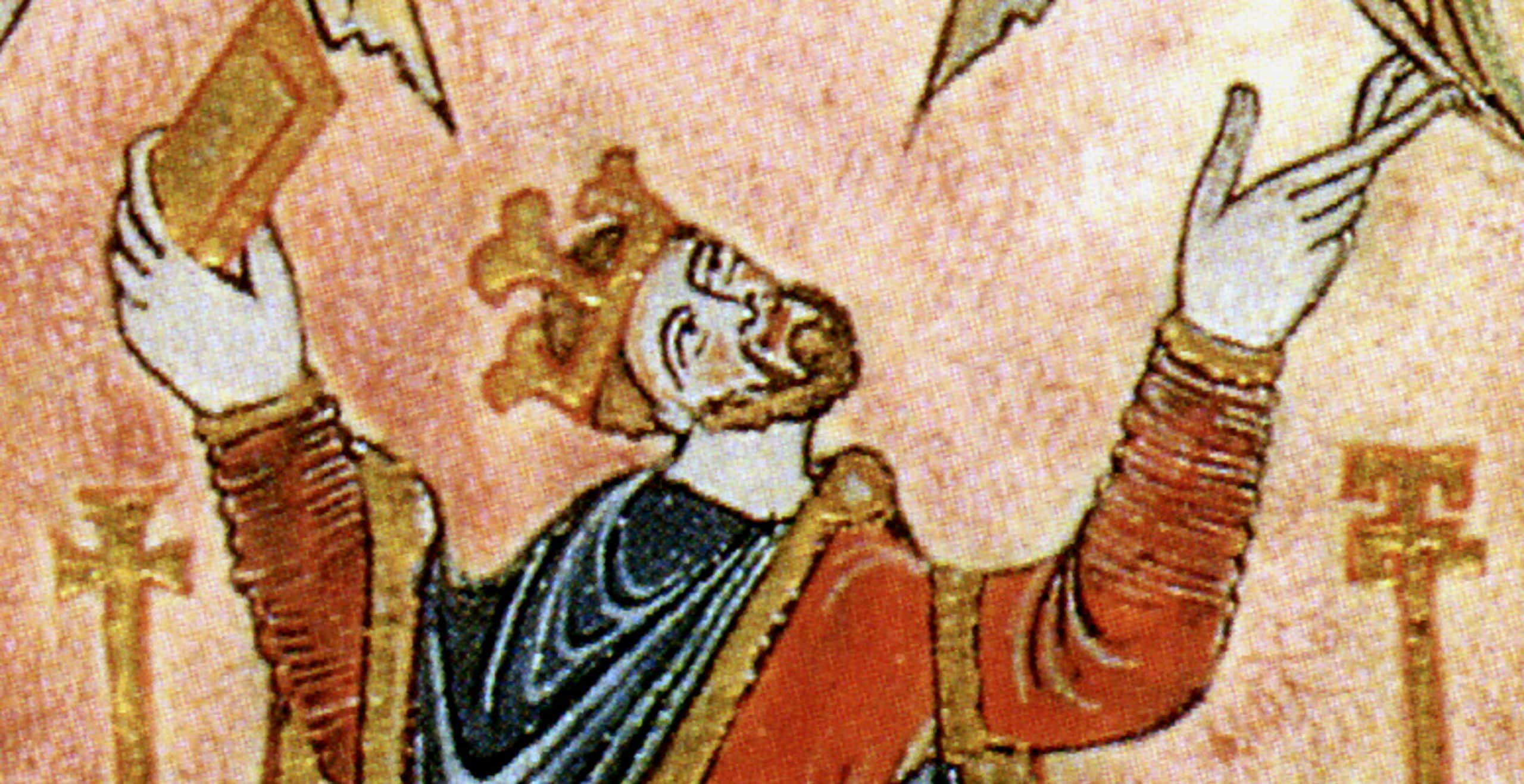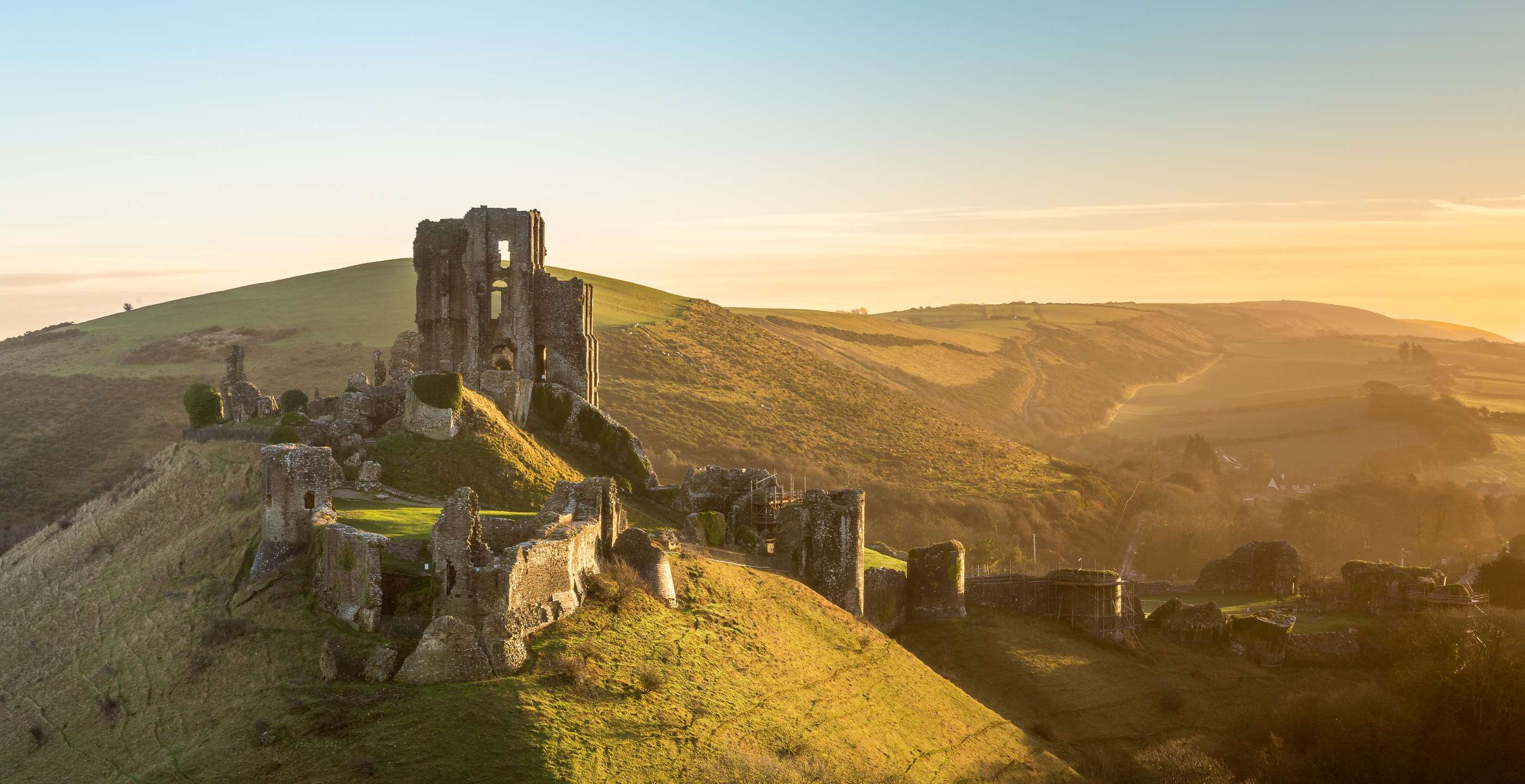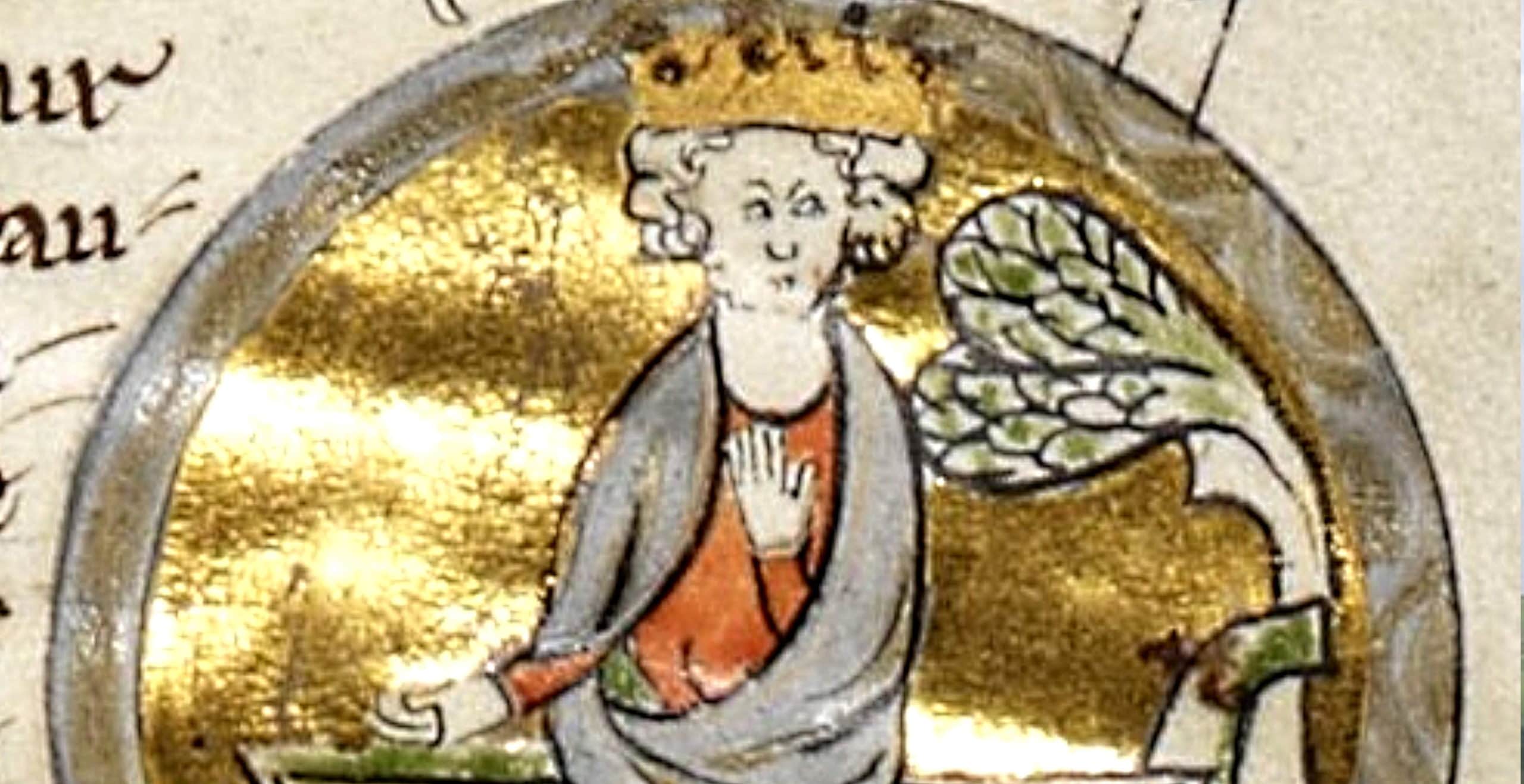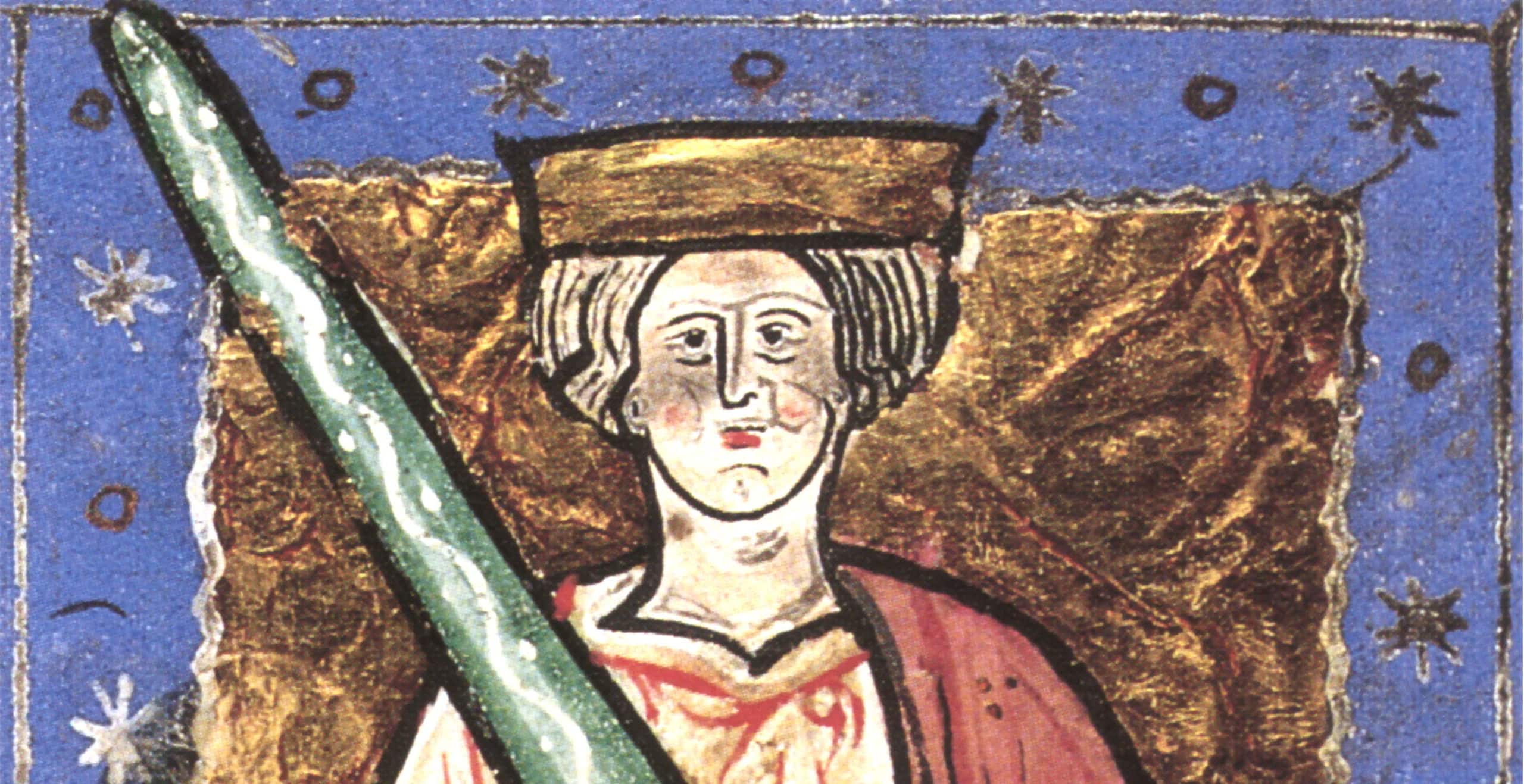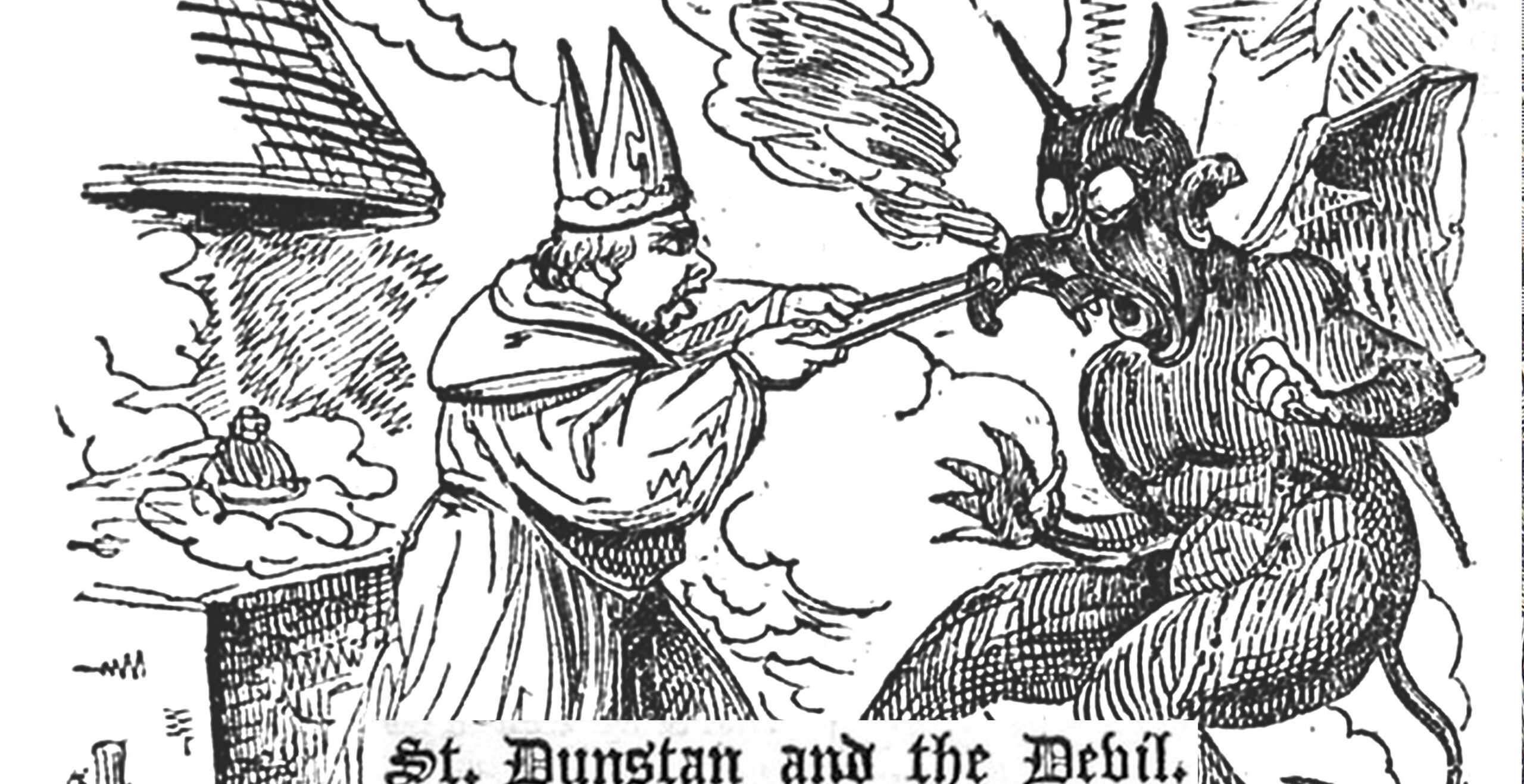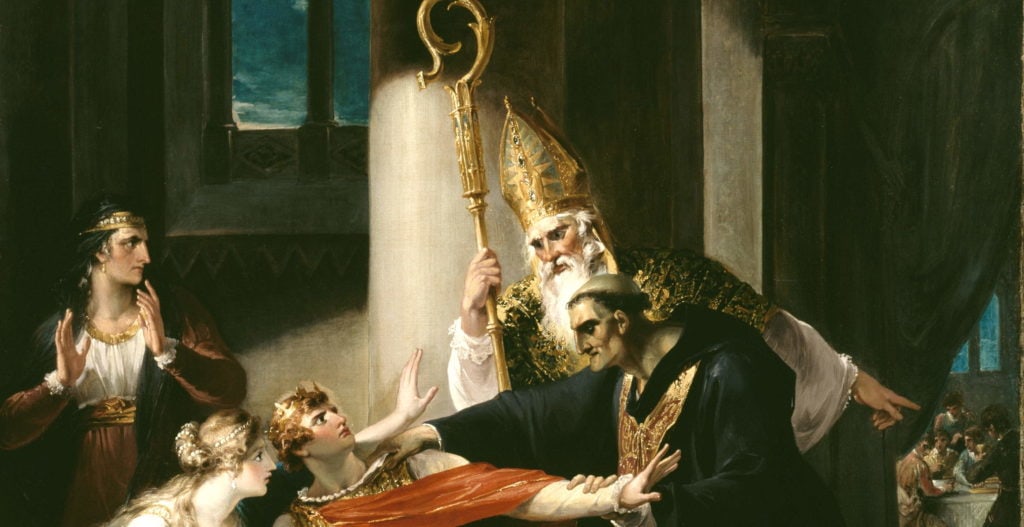King Edgar came to power in 959, uniting a fractured England and introducing a period of calm and stability, something unheard of in medieval kingship.
He was born in 943 to King Edmund I and his first wife, Aelgifu of Shaftesbury. Together the couple had three children, two boys, Eadwig and Edgar as well as a daughter.
Sadly, Kind Edmund’s reign proved short-lived and lasted only six years until his death in 946. At this time, both Eadwig and Edgar were too young to inherit and thus the throne was passed on to Edmund’s younger brother Eadred who would rule for almost a decade until his own death in 955.
Once their uncle Eadred had died, the succession rights now passed on to Eadwig, as Edmund’s eldest son. Whilst he was entitled as the eldest brother to be king, his rule proved deeply unpopular and his reign was characterised by conflict and instability.
In particular, Eadwig clashed with the nobility as well as significantly members of the Church including St Dunstan and the Archbishop Oda. As a result of these divisions, in 957, Mercia and Northumbria switched their allegiance to the younger brother of the king, Edgar.
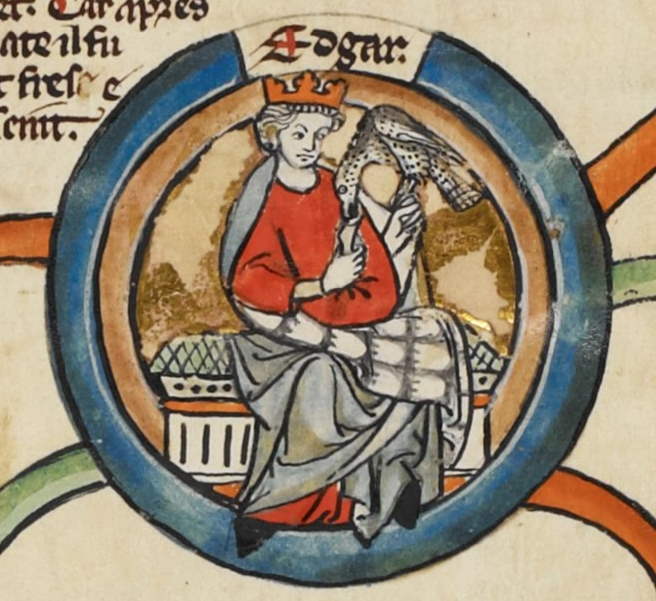
With popular support backing Edgar but Eadwig still rightfully king, the kingdom of England found itself split along the line of the River Thames with King Eadwig retaining control of Wessex and Kent whilst Edgar had become king of the north.
Only two years after this monarchical fracture the matter would be resolved as Eadwig passed away in October 959 leaving a young sixteen year old Edgar, already a popular figure in his own right, to become King of England.
In his first act as king, Edgar united the two halves of England which were now governed in unity under his sole control.
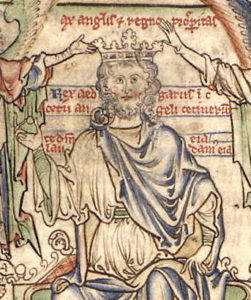
King Edgar, would unlike his predecessors, rule for a considerable time, during which, he would create stability and continuity unlike anything which had been achieved since the time of Athelstan.
He would rule peacefully from October 959 until his own death in 975 and as a result would become known as King Edgar the Peaceful.
From the beginning of his reign, Edgar was keen to reverse his brother’s divisive policies and repair fractious relationships, particularly with the Church.
Almost immediately, Edgar recalled St Dunstan from his exile which had been imposed on him by Eadwig and made him Bishop of Worcester. He would subsequently become Bishop of London and later still be promoted to become Archbishop of Canterbury. This was very significant, particularly for Edgar as St Dunstan would serve him as one of his most valuable advisors.
The years of stability created during his reign allowed for development of laws and institutions which would later form the basis of King Cnut’s governance as he observed that he wanted the nation to “steadfastly observe Edgar’s laws, which all men have chosen and sworn at Oxford”. Thus demonstrating how Edgar’s rule became a blueprint for kingship in later generations.
Moreover, Edgar introduced further changes to infrastructure and administration in his domain including, dividing England into shires, protecting the currency, adopting a neutral policy towards the Danelaw, encouraging trade and boosting naval power to almost 4000 ships.
Arguably one area he remained deeply focused on was that of the Church. After restoring many of the relations which had soured under his brother’s kingship, Edgar’s reign under the guidance of St Dunstan was characterised by the monastic reform movement. As such this introduced the Bendictine Rule to English communities which included replacing married clergy with celibate monks, in line with the Rule of Saint Benedict.
Moreover, Edgar whilst careful with his judgements in order to ensure calm during his reign, was much more forthright when it came to punishing those who withheld church dues. He would remain supportive of the Church, listening to the guidance of St Dunstan and backing the monastic reforms.
Meanwhile in his personal life, Edgar had three prominent relationships, the first with Aethelflaed Eneda, who was the daughter of Ealdorman Ordmaer. They would produce one son in their marriage, Edward the Martyr who would inherit the throne from Edgar when he passed away.
His second relationship was with Wulfthryth of Wilton with whom he had one daughter known as Edith of Wilton, or Saint Edith.
His third and final relationship was with Aelfthryth, a woman from a prominent family in Wessex whose first marriage to Aethelwald was cut short when he was killed in a hunting accident. This accident would later become the subject of much speculation as it was thought that Edgar had in fact killed Ealdorman Aethelwald, as he had wanted Aelfthryth for himself and thus the love rival usurped the king and married her first. Legend has it, that in retaliation for this betrayal he had him killed, an event which was to be commemorated in 1825 by a stone cross known as Dead Man’s Plack.
Whilst the exact details of the events remain the subject of much scrutiny, after Aethelwald was killed, Edgar went on to marry Aelfthryth, a woman of great beauty and had two sons with her, Edmund and Aethelred the Unready.
Whilst his private life proved more dramatic than his kingship, by 973 Edgar introduced another custom which would form the basis for monarchical tradition centuries later.
In 973, King Edgar and his wife Aelfthryth, attended his coronation in Bath, as orchestrated by his close friend and confidante, St Dunstan. The events of the day would inspire a poem in the Anglo-Saxon Chronicle and pave the way for the coronation celebrations we are familiar with today.
The only difference being that the festivities were intended as a celebration of the zenith of his kingship rather than marking the beginning of his reign.
Not long after this ceremony, King Edgar’s council at Chester took place, involving his royal barge being rowed on the River Dee at Chester. Whilst the finer details of the event have been shrouded in intrigue, it is believed that alongside him were six to eight sub-kings from across the British Isles.
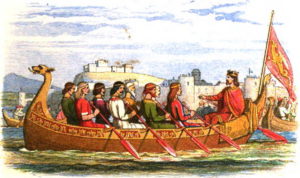
Several of the kings attended this event to pledge their allegiance to Edgar, including Kenneth II of Scotland and Máel Coluim I of Strathclyde.
Edgar’s coronation and subsequent council at Chester demonstrated the unity he was able to achieve during his time as king.
Whilst medieval kingship remained notoriously scandalous and not without issue, King Edgar the Peaceful was able to demonstrate his management ability, treading a careful line between diplomacy and royal command.
Sadly, upon his death in 975, his eldest son, Edward the Martyr, would not experience such a happy fate.
King Edgar the Peaceful proved to be an anomaly as a medieval king, a reign characterised by peace, progress and stability rather than war, infighting and chaos.
Only time would tell whether other kings could follow in his footsteps.
Jessica Brain is a freelance writer specialising in history. Based in Kent and a lover of all things historical.
Published: 2nd September 2022
